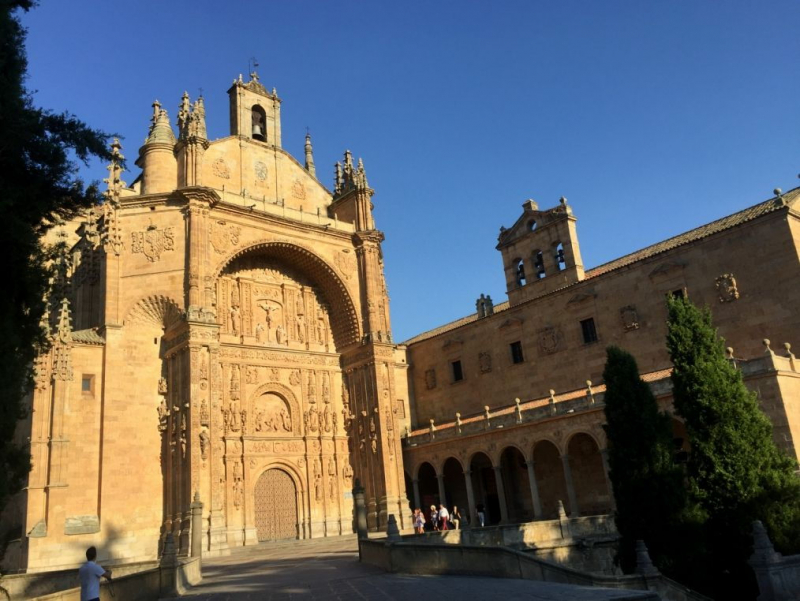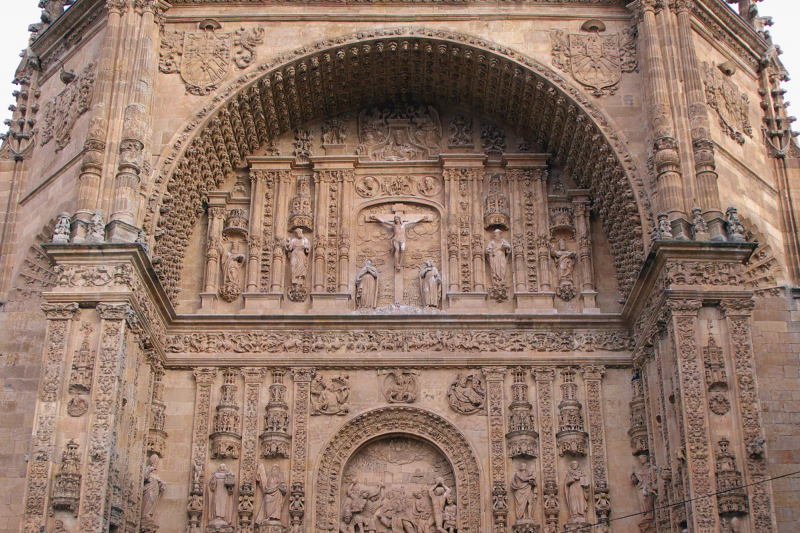Convento De San Esteban
In the Spanish city of Salamanca, there is a Dominican monastery called the Convento de San Esteban. The Dominicans arrived in Salamanca in 1255, according to history. The architects Martin de Santiago and Rodrigo Gil de Hontaón worked on the new monastery's building in 1610 after their old monastery was destroyed in 1524.
The story has it that Christopher Columbus once went to this monastery while at Salamanca to argue with the university's geographers about his theory that he could sail west to the Indies. The portico of the monastery and the front of the church are both part of its facade. One of the finest specimens of Plateresque style (silver) architecture is seen in the church's anterior.
Although the church is regarded as a superb example of Plateresque architecture, the lengthy construction process explains the church's combination of architectural styles, from Gothic to late Baroque, the latter of which is most obvious in the main altar's reredos by José de Churriguera. When Christopher Columbus traveled to Salamanca to argue his theory that he could reach the Indies by sailing west against the university's geographers, it is said that he resided in this monastery (really in the earlier structure it replaced). It served as a key hub for the Dominicans who established the School of Salamanca, which was led by Francisco de Vitoria, during the Counter Reformation.
Location: Salamanca, Spain
Time: 1610













